Authored by Jeff Carlson and Hans Mahncke via The Epoch Times (emphasis ours),
Four prominent scientists who played key roles in shaping the public narrative around the origin of COVID-19 received substantial increases in grant money from the National Institute of Allergy and Infectious Diseases (NIAID), headed by Dr. Anthony Fauci, in the subsequent two years, a review of funding data by The Epoch Times has found.
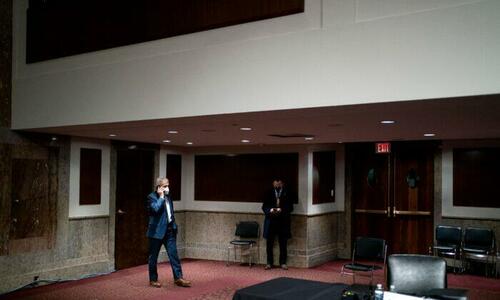
Three of these scientists—Kristian Andersen, Robert Garry, and Michael Farzan—were advisers to a teleconference organized by Fauci held on Feb. 1, 2020, in response to increasing public questions about the origin of the virus.
The scientists were also instrumental in the publication of Proximal Origin, a highly influential paper that promoted a natural origins theory for SARS-CoV-2, the virus that causes COVID-19, and has been frequently cited by the government and media.
Emails released under Freedom of Information Act requests, showed that the scientists had told the senior members of Fauci’s teleconference that they were 60 to 80 percent sure that COVID-19 had come out of a lab.
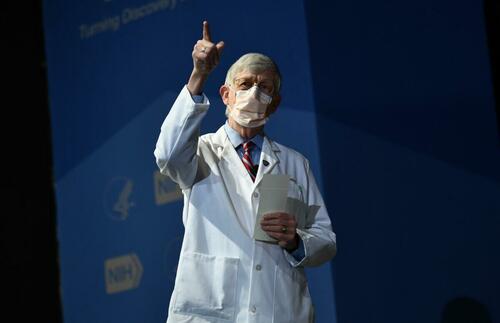
Notably, despite their private concerns about the origin of the virus, the first draft of Proximal Origin was completed on the same day as the teleconference. Andersen and Garry were co-authors of Proximal Origin and Farzan was acknowledged in the Nature version of Proximal Origin for his participatory discussions in the article’s creation.
Additionally, Fauci’s NIAID provided a substantial increase in funding to EcoHealth’s Peter Daszak, through whom NIAID had funded controversial gain-of-function coronavirus research at the Wuhan Institute of Virology in China.
Some of these funding amounts have continued through 2021—and one of the newest grants will continue through at least 2025.
A significant portion of the funding increase for Daszak, as well as for Andersen and Garry, was provided through NIAID’s creation of the Centers for Research in Emerging Infectious Diseases (CREID).
The program, which was originally referred to as Emerging Infectious Diseases Research Centers (EIDRCs) during the early planning stages in 2019, was formally announced under a new name on Aug. 27, 2020. It is not known why the program was initially delayed or why it was renamed.
The new initiative, described as a global network that involves “multidisciplinary investigations into how and where viruses and other pathogens emerge from wildlife and spillover to cause disease in people,” provided eleven new grants totaling $17 million of new funding in the first year and $82 million in total funding across five years.
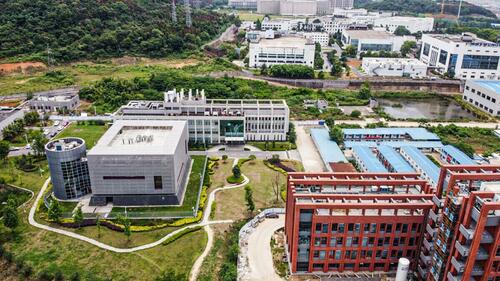
Andersen and Garry were the co-recipients of a new $8.9 million 5-year grant made under the CREID initiative that established the West African Research Network for Infectious Diseases (WARN-ID). Daszak was the recipient of a new $7.5 million, 5-year CREID grant that established the Emerging Infectious Diseases: South East Asia Research Collaboration Hub (EID-SEARCH). The other participants of the NIAID CREID program can be found here.
Notably, although the creation of CREID was not publicly announced until Aug. 27, 2020, the Award Notice Date for the grants to Andersen and Garry are listed as May 21, 2020. The CREID grant to Daszak lists an Award Notice Date of June 17, 2020. The timing of Daszak’s grant is particularly noteworthy as it came shortly after President Donald Trump had revoked Daszak’s previous grant from Fauci’s NIAID in April 2020 due to Daszak’s entanglements with the Wuhan Institute of Virology.
Andersen, who had privately told Fauci on Jan. 31, 2020, that the virus “looked engineered,” but later helped spearhead Fauci’s efforts to promote a natural origins narrative, received a total of $7.4 million in funding in 2020 as compared to $4.5 million in grant proceeds in 2019. Andersen’s total grant funding increased to nearly $9 million in 2021. The new CREID grants (co-awarded with Garry) accounted for approximately $1.9 million of his 2020 grant proceeds and $2 million of his grant proceeds in 2021. Included in Andersen’s 2021 figure is a $266,250 CREID grant that was made to Andersen but did not include Garry as a co-recipient.
While it is not known at this point whether there was a connection between the increased funding and the scientists’ involvement in shaping the public natural origins narrative, these new revelations raise an obvious question: How is it that among the thousands of scientists eligible to participate in the much-desired funding from the eleven grants provided by Fauci’s new $82 million CREID initiative, three of those chosen happened to be the same individuals who had led the way in promoting Fauci’s natural origins narrative—despite their private concerns that the virus had been created in a lab.
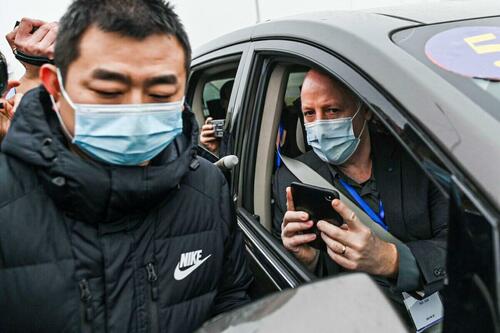
During the Feb. 1, 2020, teleconference, Andersen claimed to be “60 to 70 percent sure the virus came from a laboratory.” One of Andersen’s Proximal Origin co-authors, Edward Holmes, put that figure even higher, at “80 percent.”
Garry, who told the senior members of Fauci’s teleconference group that he “really can’t think of a plausible natural scenario where you get from the bat virus” to SARS-CoV-2, received $7 million in NIAID grants in 2020 as compared to $5.7 million in 2019. Garry also received $6.6 million in grants in 2021. The new CREID grant (co-awarded with Andersen) accounted for approximately $1.9 million of his 2020 grant proceeds and $1.8 million of his grant proceeds in 2021.
During the Feb. 1, 2020, teleconference, Garry cited the remarkable sequences of mutations that would have to occur for SARS-CoV-2 to arise naturally, telling the group, “I just can’t figure out how this gets accomplished in nature.” However, Garry noted that a lab-created virus would easily explain the virus data he was seeing, telling Fauci’s group that “in the lab, it would be easy to generate the perfect 12 base insert that you wanted.”
Notably, Garry recently admitted in written correspondence with The Intercept that he had been advised not to discuss a lab leak in the Proximal Origin paper, stating, “The major feedback we got from the Feb 1 teleconference was: 1. Don’t try to write a paper at all—it’s unnecessary or 2. If you do write it, don’t mention a lab origin as that will just add fuel to the conspiracists.”
Garry—along with Andersen—must have heeded that directive because on Feb. 1, 2020, the same day as Fauci’s teleconference, both men had helped to complete the first draft of Proximal Origin promoting the idea that the virus had originated in nature. That paper became the media’s and the public health establishment’s go-to evidence for a natural origin for the virus.
The choice of Andersen as a lead author for Proximal Origin is particularly curious as Andersen had no material experience in researching coronaviruses. His stated focus was related to the Zika virus, Ebola virus, West Nile virus, and Lassa virus. It wasn’t until sometime after the Feb. 1 teleconference that he changed his biography to incorporate SARS-CoV-2.
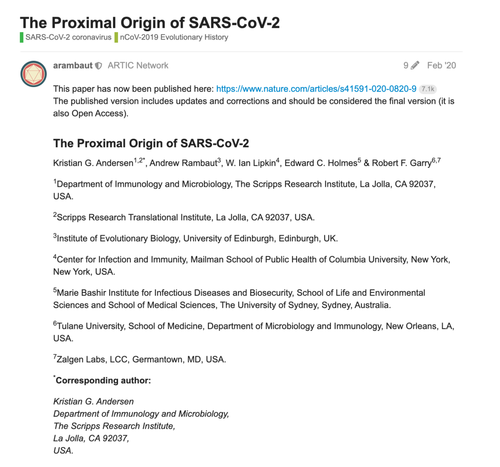
Proximal Origin was published online on Feb. 16, 2020, and sought to exclude the possibility of a lab leak. The article would prove to be highly influential and has been extensively used by Fauci and media organizations in their promotion of the natural origins narrative.
Another recipient of funding under the CREID initiative was EcoHealth president Peter Daszak, who received a total of $1.5 million in both 2020 and 2021. Unlike either Andersen or Garry, proceeds from his CREID grant make up the entirety of his listed NIAID grants in both years. By way of comparison, Daszak had received approximately $662,000 in NIAID grant money in 2019. Put another way, Daszak’s post-pandemic funding increased by approximately 130 percent.
Daszak, who heavily promoted the natural origins narrative, was personally involved in gain-of-function work with the Wuhan Institute of Virology, which continued until at least April 2020. Most prominently, Daszak authored a 2018 research proposal which details the creation of a virus in a lab that bears a remarkable similarity to the defining features of COVID-19.
That proposal, dated March 27, 2018, details EcoHealth’s plans, in conjunction with the Wuhan Institute, to create entirely new coronaviruses through the synthetic combination of preexisting virus backbones. It describes how those viruses were going to be made more virulent in humans by the insertion of a furin cleavage site, a feature that distinguishes COVID-19 from all other SARS-related coronaviruses.
Another scientist who advised the Feb. 1, 2020, teleconference, Michael Farzan, received $9.9 million in grants from Fauci’s NIAID in 2020, followed by another $7.9 million in 2021 and an additional $919,000 at the start of 2022. By comparison, Farzan had received $3.8 million in grant money from NIAID in 2019. Although Farzan received substantial increases in grant funding, none of that money appears to have come under grants provided by the CREID initiative.
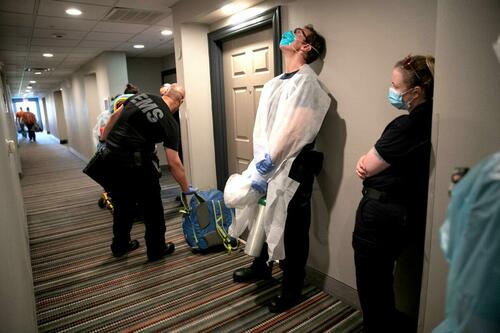
Farzan, an immunologist who in 2005 discovered the receptor of the original severe acute respiratory syndrome (SARS) virus, had told the senior members of Fauci’s teleconference group in emails that the pandemic likely originated from a lab in which live coronaviruses were passed repeatedly through human-like tissue, accelerating virus mutations with the end result being that one of the mutated viruses may have leaked from the lab. Farzan told Fauci’s group that he placed the likelihood of a leak from a Wuhan lab at 60 to 70 percent.
But in an Oct. 5, 2021, paper, Farzan appeared to agree with conclusions put forth in Proximal Origin, when he claimed that a “comparison of the S protein sequences indicates SARS-CoV-2 may have emerged from the recombination between bat and pangolin coronaviruses.” Farzan, like Andersen, works at the Scripps laboratory.

